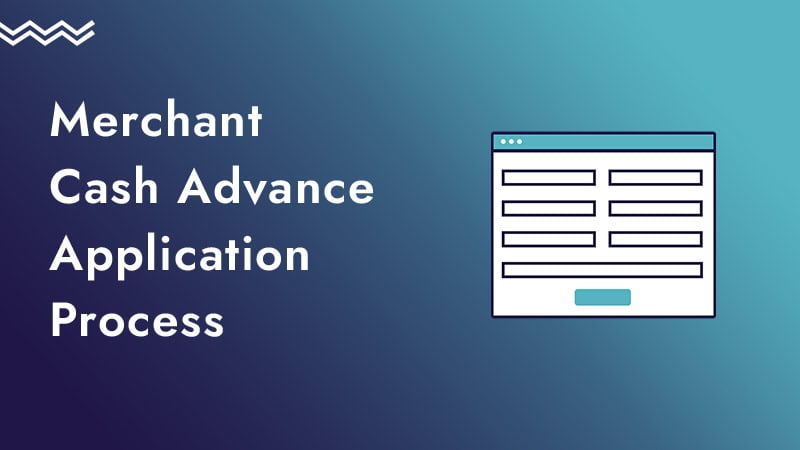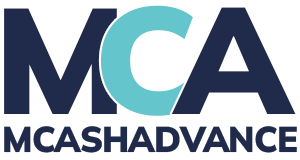
We’ve funded thousands of small businesses through merchant cash advances. Compared to traditional loans, the MCA process is faster, more flexible, and built for businesses that can’t afford to wait weeks for approval.
That said, there are important steps to follow before applying. What you submit, how you evaluate the offer, and how you prepare for repayment all make a difference in how MCA funding works for you.
8 Steps to Apply for a Merchant Cash Advance
| Step | Action | What to Know |
|---|---|---|
| 1. Assess Your Funding Needs | Decide how much capital you need | MCAs are short-term. Most are repaid in 3 to 18 months. Make sure your cash flow can support daily or weekly deductions. |
| 2. Research MCA Providers | Check eligibility and practices | Look at revenue requirements, time in business, credit checks (soft or hard), and how repayment is structured. |
| 3. Gather Business Documents | Get your paperwork ready | We typically ask for recent bank statements, card sales reports, a government-issued ID, and a voided check. |
| 4. Submit an Application | Apply online or by phone | Applications take 3 to 10 minutes. You’ll enter business info, revenue, and contact details. |
| 5. Wait for a Decision | Get pre-approved or declined | We review your application using real-time data, then follow up with a manual review if you qualify. |
| 6. Review Your Offer | Understand the terms | We’ll send you a breakdown of the advance amount, factor rate, holdback percentage, and repayment method. |
| 7. Accept or Decline | Sign electronically or walk away | Ask about a personal guarantee or confession of judgment. You can negotiate or pass if the offer isn’t right. |
| 8. Set Up Repayment | Connect your processor or bank | Once funded, we begin collecting payments automatically through ACH or split processing. |
Step 1: Decide How Much You Need
Start by identifying the specific funding amount your business needs and how quickly you’ll be able to repay it. MCAs are meant for short-term needs like smoothing out cash flow, covering payroll, or acting on time-sensitive opportunities.
We’ve seen repayment periods range from 3 to 18 months, depending on the advance size and your sales. Use our MCA calculator to estimate your total repayment based on the factor rate.
Step 2: Research Providers and Check Requirements
We often hear from business owners who applied elsewhere first and were caught off guard by hidden terms or stricter requirements. MCA providers vary widely in how they qualify applicants and structure repayment.
Here’s what we look at when reviewing an application:
- Monthly revenue of at least $8,000
- Time in business of 6 months or more
- FICO score of 500 or above
- 3 to 6 months of recent bank or merchant statements
Other providers may ask for more, such as tax returns or a business plan. Some run hard credit pulls, while we stick to soft checks that don’t impact your score. For a full breakdown, check our qualification requirements for an MCA.
Step 3: Gather Your Business Documents
To evaluate your application, we’ll ask for:
- Bank statements (last 4 to 6 months)
- Credit card sales reports (if applicable)
- Government-issued ID
- Voided business check
- Business license, if required for your industry
These documents help us confirm your revenue and consistency. Submitting them upfront prevents delays during underwriting. See our full list in MCA underwriting.
Step 4: Submit the Application
Our online application takes 3 to 10 minutes. You’ll enter:
- Legal business name and address
- EIN or SSN (depending on your structure)
- Industry and monthly revenue
- Owner contact details
We don’t ask for a business plan. If we need to check your credit, we’ll only do a soft pull. Learn how we handle credit in MCA credit reporting.
Step 5: Pre-Approval or Denial
Once your application is submitted, we start with a real-time pre-check. If the numbers look solid, we’ll move to manual review.
At this point, we verify your deposits, check for consistency, and assess your risk profile based on sales volume and industry. If you’re not approved, we’ll tell you what we can and in many cases, let you know what would help you qualify next time.
Step 6: Review Your MCA Offer
If approved, we send you an offer that includes:
- Advance amount
- Factor rate
- Holdback percentage or fixed daily ACH
- Estimated repayment duration
This is not an interest-based product. The factor rate determines your total repayment upfront. For example, an advance of $20,000 with a 1.3 factor rate means you’ll repay $26,000, no more, no less.
We explain this in plain terms in our MCA offers.
Step 7: Accept or Decline
We’ll send the agreement for electronic signature. Before you sign, ask:
- Does the contract include a personal guarantee?
- Is there a confession of judgment clause?
- Are there additional fees beyond the factor rate?
These terms are common in MCA agreements, but they carry real consequences. If something doesn’t sit right, you can negotiate or walk away. Learn more in MCA agreements.
Step 8: Set Up Repayment and Get Funded
Once signed, we usually fund within 1 to 3 business days. In some cases, we offer same-day funding.
We’ll connect to your payment processor or business bank account. From there, we collect repayment automatically each day, either as a percentage of sales or as a fixed ACH withdrawal.
You don’t need to take action after setup, but make sure your account can support daily activity. Details are in our how to repay an MCA.
Ready to Apply?
or learn more about MCA Advance

